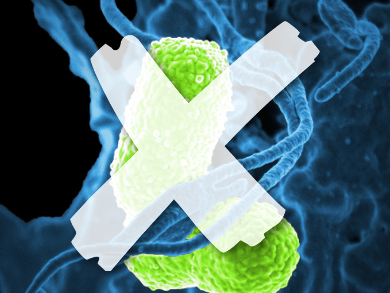Microfiltration uses very fine filters that can remove impurities and even bacteria from water. However, the bacteria accumulate on the filter membranes’ surface and over time, they can form biofilms and make the membrane less permeable. This so-called biofouling reduces the lifetime of membranes and makes filter maintenance more expensive.
Chad D. Vecitis, Harvard University, Cambridge, MA, USA, and colleagues have fabricated interlaced electrodes made from carbon nanotubes directly on polyvinylidene fluoride (PVDF) microfiltration membranes. The electrodes were created by filtering a carbon nanotube-Nafion solution through a laser-cut acrylic stencil onto the PVDF membrane. Then the team applied either an AC or a DC current (2V) to the electrodes and used the modified membrane to filter water containing Pseudomonas fluorescens bacteria.
The researchers found that the membranes with integrated electrodes and an applied voltage had fouling rates 75 % lower than an unmodified control. The researchers attribute the effect to the non-uniform electric field between the electrodes, which causes bacteria to migrate away from the field (a dielectrophoretic mechanism). In addition, the bacteria can be electrostatically repulsed by the cathode, and the bacteria can be damaged and inactivated to some extent by electrochemical effects.
- Interlaced CNT Electrodes for Bacterial Fouling Reduction of Microfiltration Membranes,
Qiaoying Zhang, Paula Arribas, E. Marielle Remillard, M. Carmen Garcáa-Payo, Mohamed Khayet, Chad D. Vecitis,
Environ. Sci. Technol 2017.
DOI: 10.1021/acs.est.7b00966




